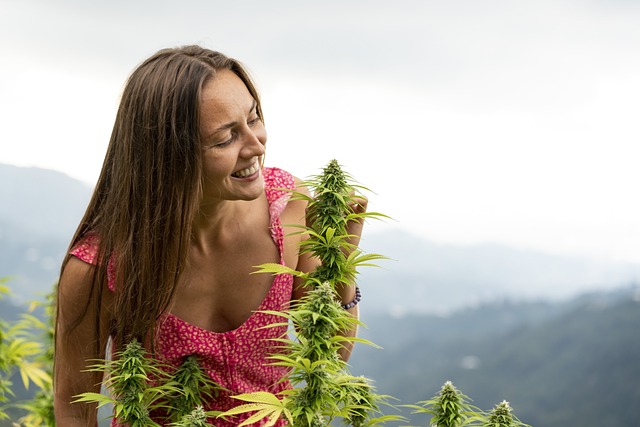How to Grow Autoflowers: A Comprehensive Guide

Autoflowering cannabis plants have gained popularity among growers for their convenience, rapid growth, and compact size. Whether you’re a novice or an experienced cultivator, learning how to grow autoflowers can be a rewarding journey. In this guide, we’ll take you through the steps to successfully cultivate autoflowering cannabis plants, from choosing the right strain to harvesting your bountiful buds.
Understanding Autoflowers
Autoflowering cannabis plants have a unique genetic makeup that allows them to transition from the vegetative stage to the flowering stage based on age rather than a change in light cycle. This trait comes from their wild ancestor, Cannabis ruderalis.
Unlike photoperiod strains, which require a specific light cycle to trigger flowering, autoflowers bloom automatically. This makes them ideal for growers looking to streamline their cultivation process and harvest quickly.
Autoflower strains come in a wide range of varieties, including indica-dominant, sativa-dominant, and hybrid strains. This diversity allows growers to choose plants that suit their preferences and growing conditions.
Factors to Consider When Selecting a Strain
Climate: Take into account your local climate and growing conditions. Some strains are better suited for specific climates, such as the cold-resistant strains for northern regions or heat-tolerant strains for hotter climates.
Experience Level: Your level of experience as a grower can influence your strain choice. Beginners may want to start with easy-to-grow strains, while experienced growers may seek more challenging varieties.
Desired Effects: Different autoflower strains offer varying effects, such as relaxation, euphoria, or creativity. Choose a strain that aligns with your desired cannabis experience.
Popular Autoflower Strains
Northern Lights Auto: This classic strain is known for its robust genetics, making it an excellent choice for beginners. It produces resinous buds with a relaxing, indica-dominant effect.
Amnesia Haze Auto: If you’re seeking a more energetic and uplifting experience, Amnesia Haze Auto is a sativa-dominant autoflower strain with a citrusy flavor profile.
Blueberry Auto: For those who appreciate fruity and sweet flavors, Blueberry Auto offers a delightful blueberry taste and a balanced indica-sativa hybrid effect.
White Widow Auto: White Widow is famous for its potency and resilience. White Widow Auto inherits these traits, making it a popular choice for both indoor and outdoor growers.
Girl Scout Cookies Auto: This strain is renowned for its sweet and earthy flavor, along with a well-balanced hybrid effect that combines relaxation with creativity.
Sourcing Quality Autoflower Seeds or Clones
Online Seed Banks: Reputable online seed banks like ILoveGrowingMarijuana, Herbies Seeds, Seedsman, and Crop King Seeds offer a wide selection of autoflower strains with detailed descriptions and customer reviews.
Local Dispensaries: Some dispensaries may carry autoflower seeds or clones, so check with your local options.
Trade with Other Growers: You can also connect with other cannabis growers and potentially trade or acquire autoflower seeds or clones from them.
Now that you have a good understanding of autoflowers and have selected the right strain, let’s move on to setting up your grow space.
Setting Up Your Grow Space
The success of your autoflowering cannabis cultivation largely depends on your grow space and environmental conditions. Here’s how to set up your space for optimal growth.
Indoor vs. Outdoor Cultivation:
Consider whether you want to grow your autoflowers indoors or outdoors. Each option has its advantages and challenges. Indoor cultivation allows for better control of environmental factors but may require more equipment. Outdoor cultivation relies on natural sunlight but can be subject to weather conditions.
Lighting, Ventilation, and Temperature Control:
For indoor growers, invest in quality grow lights, such as high-intensity discharge (HID) or LED lights. Ensure proper ventilation to maintain humidity and temperature levels. Autoflowers thrive in a temperature range of 70-85°F (20-30°C).
Equipment and Supplies:
Gather the necessary equipment and supplies, including pots, soil or growing medium, nutrients, pH meters, and pruning tools. Quality equipment contributes to healthy plant development.
With your grow space ready, it’s time to start the cultivation process.
Germination and Seedling Stage
Step-by-Step Germination:
- Start by soaking your autoflower seeds in water for 24-32 hours.
- Plant the seeds in a small pot with a light, well-draining growing medium.
- Maintain a consistent temperature of around 70-77°F (21-25°C) and humidity of 65-70%.
- Seeds should sprout within a few days to a week.
Transplanting Seedlings:
Once your seedlings have a few sets of leaves, transplant them into their final growing medium, whether that’s soil or a hydroponic system. Be gentle to avoid damaging the delicate roots.
Nutrient Requirements:
During the seedling stage, provide a mild nutrient solution to support healthy growth. Be cautious not to overfeed, as young plants are sensitive to nutrient imbalances.
With your seedlings successfully transplanted, they will soon enter the vegetative stage. In the next section, we’ll cover this stage in detail.
Vegetative Growth
Timeline of the Vegetative Stage:
Autoflowering cannabis plants typically spend 2-4 weeks in the vegetative stage. During this time, they focus on building a sturdy structure and establishing a robust root system.
Training Techniques:
While not required, training techniques like Low-Stress Training (LST), topping, and super cropping can help improve light penetration and increase yields. However, be cautious not to stress the plants too much, as autoflowers have limited recovery time.
Common Issues:
Watch out for common issues during the vegetative stage, such as nutrient deficiencies, pests, or overwatering. Address these problems promptly to ensure healthy growth.
Now that your autoflowers have transitioned to the flowering stage, it’s essential to know how to manage this crucial phase.
Flowering and Harvesting
Autoflower Flowering Stage:
Autoflowers typically start flowering between 2-4 weeks from germination. The flowering stage lasts for 7-9 weeks on average, although it varies by strain.
Signs of Maturity:
To determine when it’s time to harvest, look for signs of maturity, such as the appearance of trichomes and the fading of white pistils. Use a magnifying glass to closely examine trichomes for the desired level of cloudiness or amber color.
Harvesting Tips:
When harvesting, use clean pruning shears to trim the buds from the plant. Hang the harvested buds upside down in a dark, cool, and well-ventilated space for drying.
Drying and Curing:
Properly dry and cure your buds to enhance their flavor and potency. This process can take 1-2 weeks, depending on humidity levels and the density of the buds.
Conclusion
Growing autoflowers can be a rewarding and efficient way to cultivate cannabis. By selecting the right strain, setting up a suitable grow space, and mastering the various stages of growth, you can enjoy a successful harvest of high-quality buds. Remember, practice and patience are key to becoming a successful autoflower grower. So, roll up your sleeves, put on your gardening gloves, and embark on your autoflower cultivation journey today!
If you have any questions or would like to share your own experiences, feel free to leave a comment below. Happy growing!







